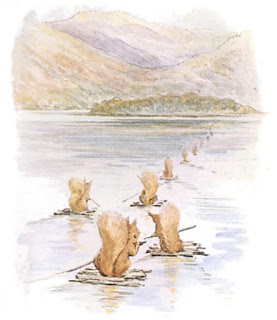On our last full day in the Lake District we went to Derwentwater which was both mercifully flat, relatively speaking, and highly atmospheric.
In the foreground is St Herbert’s
Island. It’s named after St Herbert a very close friend of St. Cuthbert. According to Bede in his Ecclesiastical History of the English People, Herbert visited Cuthbert yearly for spiritual sustenance. On his last visit St Cuthbert
told him ‘Brother Herbert, tell to now all that you have need to ask or speak,
for never shall we see one another again in this world. For I know that the
time of my decease is at hand.’
Then Herbert fell weeping at his feet and
begged that St Cuthbert would obtain the grace that they might both be admitted
to praise God in heaven at the same time. And St Cuthbert prayed and then made
answer. “Rise, by brother, weep not, but rejoice that the mercy of God has
granted our desire.” And indeed Herbert, returning to his hermitage, fell ill
of a long sickness, and purified of his imperfections, passed to God on the
very March 20th 687 on which St Cuthbert died on Holy Island.
For the less ecclesiastically minded, St Herbert's island is also the inspiration behind one of Beatrice Potter's illustrations in Squirrel Nutkin. There, it is referred to as Owl Island.
And it is likely that St Herbert would have roasted them over a low fire




















